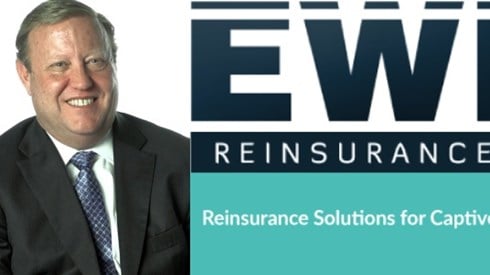How a Captive Insurer Can Drive Superior Cost of Risk Results

Glenn Peterson | December 02, 2017

Captive insurers can be used to support both strategic and tactical risk management initiatives to drive superior cost of risk results for an organization. Broad-based strategies typically include protecting and enhancing stakeholder value. On a tactical level, this translates to initiatives and strategies to protect the people, property, cash flow, and reputation of the organization. Some of these strategies include tangible costs (premiums, claims, etc.), while others are intangible in nature.
Numerous articles address various tangible savings, operational efficiencies, and advantages associated with captive insurance. This article identifies and discusses intangible issues that, in the event things do not work right, can become tangible, thereby adding to an organization's cost of risk.
Assessing and Implementing—Coverage, Claims, and Compliance
Until a claim arises, the scope and breadth of coverage are intangible. Organizations often obtain broader coverage, tailored to their exposures, through the use of manuscript forms. Such coverage can be critical to respond to significant events unique to an organization. For example, coverage for underground equipment/assets is often excluded on property policies. Likewise, the captive/insured does not need or want to pay for coverage that it does not need. Lack of such specialized coverage could lead to a high-profile uncovered loss and quickly become tangible for the risk manager and/or broker.
A solid understanding of an organization's US terrorism profile and insuring terrorism risk through the captive, where appropriate, allow the captive to access funds that would be available via the federal government backstop in the event of a certified act of terrorism. When accessing the program, the captive insurer will need to determine if it should retain or reinsure all or part of program coinsurance and deductibles and ensure that the captive's domicile has formally approved writing Terrorism Risk Insurance Program Reauthorization Act of 2015 type risk.
Failure to properly utilize this option, if the parent company or other insureds wish to purchase such coverage, may result in a high-profile loss where there is no coverage, where the company is not able to meet its coinsurance and deductible obligations, or where there are problems with payment due to noncompliance with state/domicile insurance laws.
As with terrorism coverage, a captive can be used to write cyber-risk for the organization. Coverage sections, insuring agreements, limits, retentions, and wording can be structured to address the specific exposures of the organization and, where applicable, its customers. Of consequence is that the captive can select the loss consultant(s) it utilizes in the event of a covered loss. It is important that such professionals understand the organization's business. The wrong consultant can result in an inefficient, and more expensive, recovery process.
A significant area of concern, especially for captive insurers that write international business, is legal compliance. When taking on risk in new countries/jurisdictions, there is always a learning curve as to issues like cash before coverage, types of—and mechanisms for—payment of local insurance premium taxes and mandatory assessments, access to government-sponsored terrorism schemes, etc. Missing a concept, or errors in any of these critical areas, can result in no coverage, exposure to significant taxes and penalties, and/or inability to repatriate loss payments.
Program Continuity
Another intangible aspect is loss of continuity. Year-over-year credibility with markets and a superior track record will help mitigate premium volatility over time and serve to align the goals of the business and those of the captive. Loss of this continuity from any number of factors (change in underwriters, market withdrawals from writing certain classes of business, change in the insured's risk management team or corporate risk philosophy, etc.) may result in more restrictive coverage and greater premium swings.
Therefore, it is important that risk managers and captive executives who have built strong reputations with underwriters, and who are known to run their captives efficiently and profitably, continue to stay in contact with underwriters and other service providers as they move up in organizations or move to other organizations. This allows the insured/captive easier access to new markets and, to some extent, pre-establishes credibility. Failure to do this may result in disruptions to the flow of captive business, resulting in negative implications for its reputation and higher costs.
Counterparty Risk
Counterparty risk may also be considered an intangible aspect. Organizations invariably want their reinsurance partners to be around to pay any covered claims. Reinsurers should be vetted prior to placing business with them. Vetting typically includes reviewing agency ratings, conducting reputational surveys, and reflecting on historical/personal experience with the market. As a rule of thumb, a strong reinsurance panel is probably not the least expensive reinsurance panel.
When a reinsurer becomes insolvent, an organization is quickly faced with a tangible issue. The reinsurer may either be replaced, or the additional/unplanned risk may be taken into the captive. Under circumstances where a reinsurer needs to be replaced, there may be many other insureds seeking similar replacement capacity at the same time. This often results in a weakened negotiating position for an organization and expensive replacement reinsurance with more restrictive coverage.
As a related matter, over time, successful captives build up assets in the form of reserves and surplus. Some of these assets may be available to the owner, on a one-off emergency basis, to fill a gap in coverage due to an insurer insolvency. While this is a good resource to have available, a lower surplus may reduce opportunities for the captive to write additional lines or third-party business.
Tangible to One but Not the Other
Sometimes, a captive-related process can be intangible to an insurance program but produce a tangible result for the parent company. As an illustration, rating agencies consider an organization's risk control and strategic risk management processes as part of their overall assessment. The efficient and appropriate use of a captive in managing the cost of risk, as part of the overall presentation to rating agencies, can have a positive effect on such credit ratings.
While an improved credit rating may not have a direct impact to the components typically measured in cost of risk analysis, it can result in a lower cost of capital to the parent, thus indirectly/positively impacting the parent organization's cost structure. Once a captive achieves a certain rating, it may negate the necessity for fronting and related costs/administrative tasks (issuing insurer costs, letters of credit, cut-throughs, etc.). This can result in a meaningful and measurable reduction to the cost of risk for the overall organization.
Glenn Peterson | December 02, 2017
